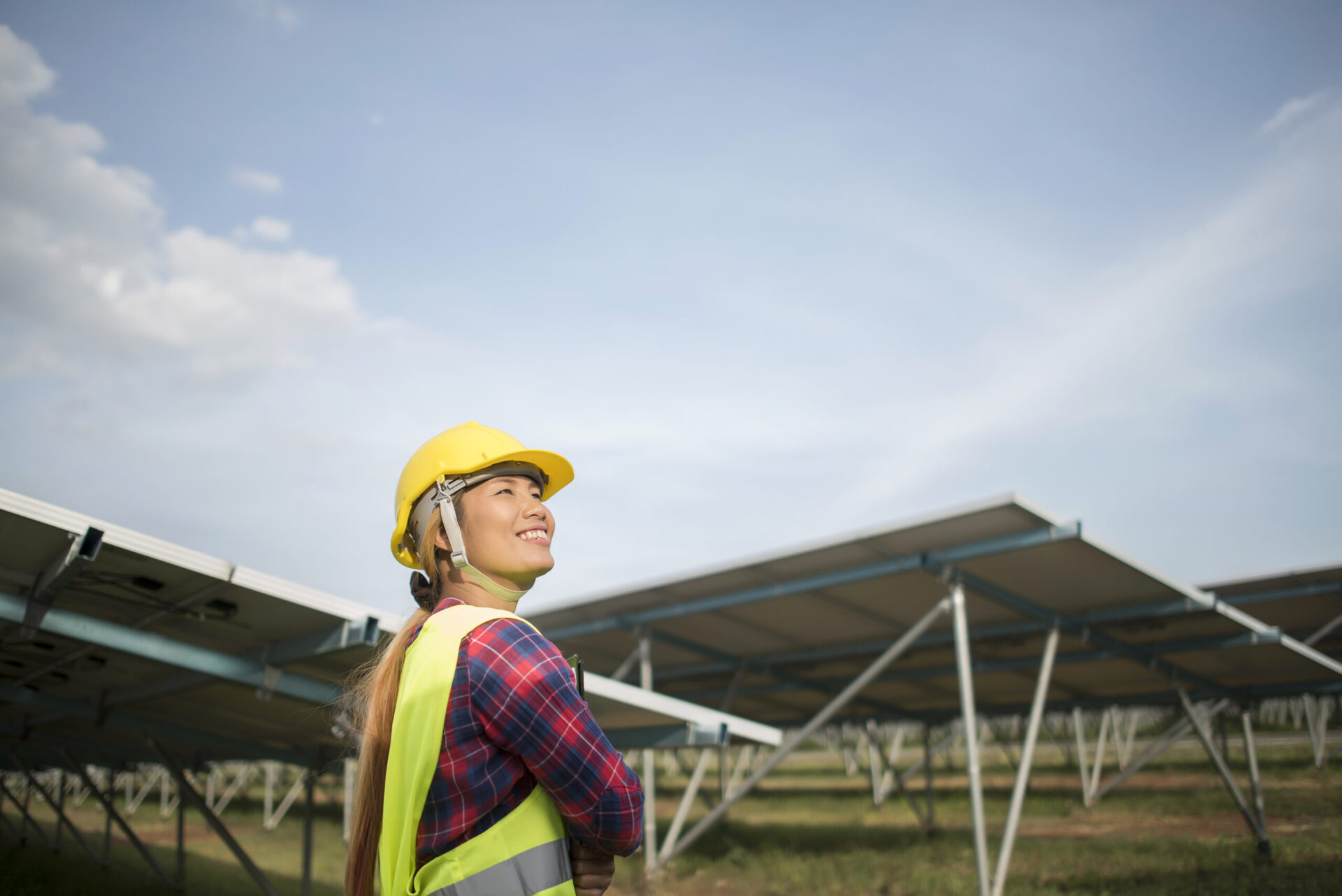With the UK and the US aiming to reach net zero by 2050, using electricity that comes from renewable sources is essential to help reduce our carbon emissions. Find out about the different types of renewable energy by reading below, or find out how you can complete a renewable energy course to start your career in the industry.
What is renewable energy?
Renewable energy is energy that comes from a source that won’t run out. They are natural, self-replenishing and usually have a very low or zero-carbon footprint.
Examples of renewable energy sources include wind power, solar power, bioenergy (organic matter burned as a fuel) and hydroelectric, including tidal energy.
Burning fossil fuels to create electricity has been a major contributor to the emission of greenhouse gases into our atmosphere for a long time, so these renewable sources are considered essential when it comes to tackling climate change.
The most common renewable energy sources
In the UK, there are four main sources of renewable energy:
Wind: Wind power is the largest producer of renewable electricity in both the UK and the US. Onshore and offshore wind farms generate electricity by spinning the blades of wind turbines. The turbines convert the kinetic energy of the spinning blades into electric energy, which is then converted into higher voltages and fed into the national grid.
Solar: Sunlight is one of the most freely available energy resources, which you’d think would make it the number one source of renewable energy! But the amount of sunlight we get varies a lot depending on location, season and time of day. Solar power generates electricity by capturing sunlight on solar panels in a joint chemical and physical reaction.
Hydroelectric: Hydropower is created using the movement of water. Hydroelectric power plants are found at dams and generate electricity through underwater turbines that turn a generator. Hydropower also includes wave and tidal power, which rely on the forces of the ocean to generate electricity at the mouths of large bodies of water, using similar technology.
Bioenergy: Electricity can be generated when organic matter is burned as a fuel source. These fuels are known as biomass and include anything from plants to timber to food waste. Carbon dioxide (CO2) is emitted when bioenergy is made, but these fuel sources are considered renewable because they can be regrown and absorb as much carbon as they emit.
What are the benefits of renewable energy?
There are several reasons why harnessing the power of renewable energy sources is so important for our future.
As they are renewable and in a bigger supply compared to fossil fuels, governments across the world are looking to develop renewables to exclusively power their nations.
Maybe most importantly, renewables produce little or no harmful emissions when used, so the clean energy they provide will play a very important role in preventing further global warming. It’s why so many of our net zero goals in the future depend on increasing their use!
Enrol on a renewable energy course today
If you have a genuine passion for the environment and want to embark on a brand new career journey, then why not train to become a qualified renewable Engineer?
With the world continuously making moves towards sustainable energy policies, the demand for more certified renewable energy specialists will only increase. Here at The Skills Centre, our courses work around you and your circumstances to enable you to achieve your career goals.
Get in touch with our team today and we’ll get you started!







